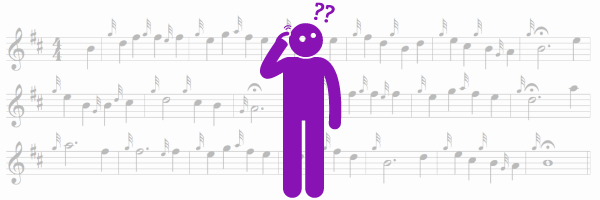Why Can't I Memorize My Bagpipe Tune?!

How long does it take you to learn a tune? Do you work on it for weeks without much progress? Does it take you months to memorize a new tune and still have parts that cause your fingers to stumble?
Join us as Andrew walks you through a simple process to learn a tune. Practicing is not enough. Follow this foolproof method to have any tune up and running in one week!
Listen to this as a podcast:
You can listen to the Piper's Dojo Audio Experience Podcast on iTunes, Soundcloud, or wherever you listen to your podcasts.
Class Transcription:
Let's talk about layers of learning a part of a tune. Anybody remember the layers? All right. The best thing you can do, or the proper way to learn a tune, is in layers phase by phase. Okay? So this goes for each part at Dojo U as well. Even as an ultra advanced super genius world champion, this guy. Even as a super advanced world champion dude, we still do this in layers. The layers are compressed. The naked eye might not be able to detect that we are learning the tune in layers, but we are.
What are the layers? Does anybody remember? Cool, Beth. I like that. Layer one is basic monotone rhythm. What does monotone mean in this case? It just means we're not even worried about the melody yet, we're just worried about our ability to play through the rhythm. So the high level hornpipe this week, the rhythm is a little bit strange. We've got to make sure we have that down. (singing)
Something like that, right? And that's tricky. There's a lot of different rhythms switching back and forth. Well, there's only three of the different rhythms switching back and forth, and really, for the most part, only two. But we got to get used to it. We've got to get used to that rhythm, okay? That's layer one. Before you do anything else, you should be addressing layer one and making sure all the rhythms make sense to you.
What's the next layer? Any takers? Beth has already answered so she is disqualified from future answering. Jennifer says, "Sing the melody and get it stuck in your head." Well, that's two. But yeah, sing the melody. If you cannot sing it, you cannot play it. Okay? And you don't have to be like a major opera singer. It's not that kind of singing, okay. But this first part of high level would go. (singing)
I had a couple little hiccups there when I sang it, so I should move to the next step. No. Let's get rid of those hiccups, okay. We should just be able to sing this naturally. (singing) You may notice I'm not looking at any music there because I've memorized this tune, certainly the first couple parts of it, long ago. So now it's just kind of stuck in my head and it's easy to sing easily.
What's the next layer of the learning onion after I can sing the melody really naturally? Get it stuck in your head. What's another way of saying get it stuck in your head? John says, "Start memorizing." I would go one step further and just say, "Memorize it." Okay? Memorize how the tune goes. Memorize this singing of the tune. Now you look at the mission of the week and it says, "Don't necessarily memorize." But if it were me, I would just memorize it. How much easier is it going to be to memorize something that you're just humming verses that you have to play on the entire full instrument with all those complicated embellishments? What's going to be easier, memorizing it now or memorizing it later?
And then what's the key to having a great performance of any kind anywhere, right? The key is to truly manifest your intention on our instrument. So our intention sure as heck better be a memorized version of the tune in our minds, right? So now is the right step for memorization. Memorize it. So if it were me, on Friday the new tune comes out, I would find a little bit of time to tap through the rhythms, get the tune singing in my brain, and then I would sing that puppy all day Saturday. (singing)
Right? Now what's the next thing that we do? I'll just speed it up. Next thing we do is we play it simplified. All right? And then the final thing that we do is play the fully embellished version. Okay? And this is the right way to approach learning a tune. Oh yeah, of course building the tune up. But you could build the tune up at different steps, right? So you can build the tune when you're doing the basic rhythm, and then you can build it when you're using the melody. The tune building process is probably the best tool for learning the tune.
And it turns out there are no other doublings other than that D throw at the end of the part. So there you go. I'm good.





Responses